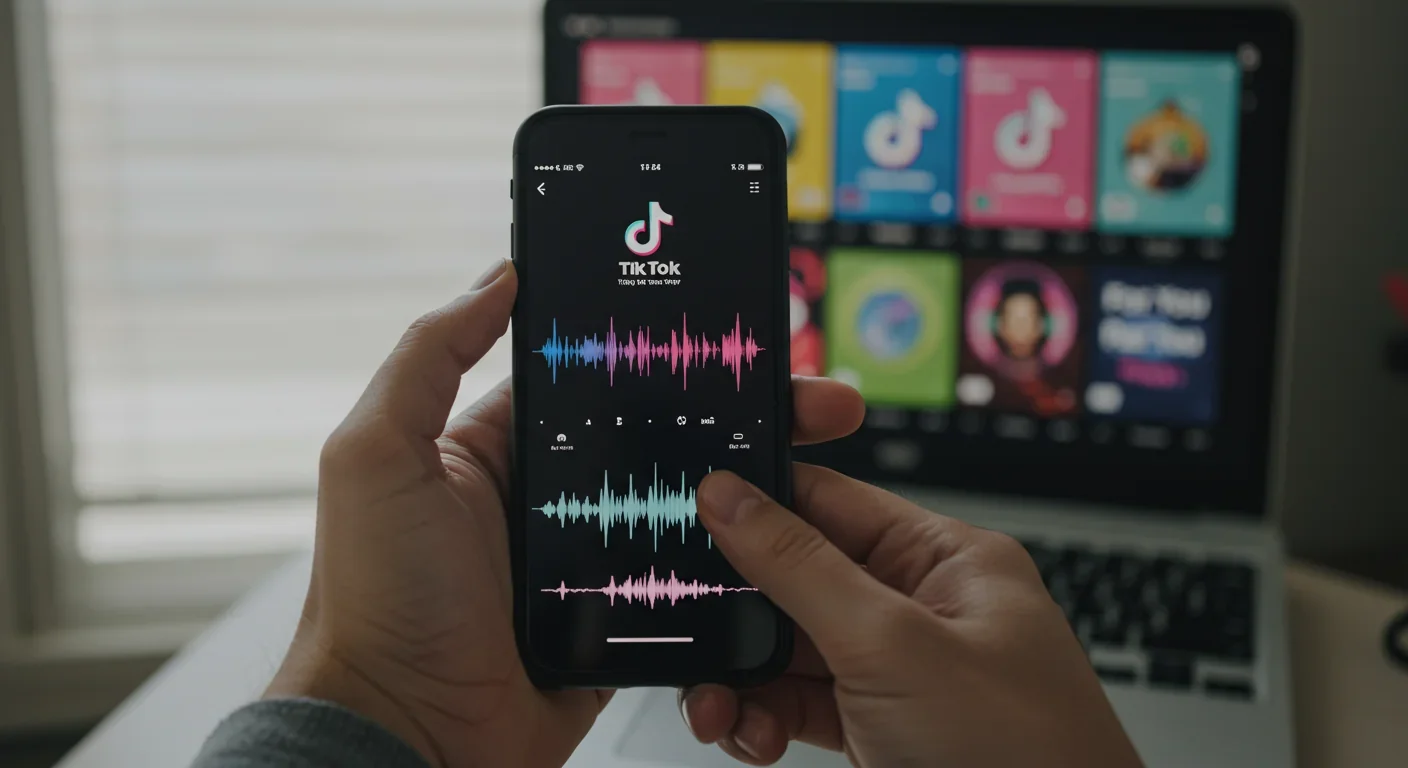Why Your Brain Sees Gods and Ghosts in Random Events

TL;DR: Cultural evolution moves exponentially faster than genetic evolution because ideas spread through social networks in hours rather than generations. Digital platforms amplify this through algorithmic selection, creating both unprecedented opportunities for knowledge sharing and serious risks from viral misinformation.

A single tweet takes seconds to reach millions. Your genes? They need an entire human lifetime—plus another—just to pass to your grandchildren. This isn't a metaphor. It's the fundamental asymmetry reshaping civilization faster than evolution ever could.
While your genetic code creeps forward at generational pace, the ideas bouncing around your skull can circle the planet before lunch. Scientists call this cultural evolution, and it's rewriting the rules of how societies adapt, innovate, and sometimes implode. The speed difference isn't marginal. It's astronomical.
Richard Dawkins coined the term "meme" in his 1976 book The Selfish Gene, proposing that ideas replicate through minds the way genes replicate through bodies. But genes need sex, gestation, and decades to spread. Memes just need attention.
Cultural evolution operates through mechanisms borrowed from biology—mutation, selection, replication—but on radically compressed timelines. A genetic mutation might take 100,000 years to sweep through a population. Mozart's musical innovations spread across Europe in years. A clever TikTok sound goes global in hours.
The key difference? Transmission speed. Genes move vertically from parent to child, locked into generational turnover. Ideas move horizontally, diagonally, through networks of millions simultaneously. You can inherit ideas from strangers on different continents without meeting them, without sharing ancestry, without waiting for reproductive cycles.
Social media didn't invent viral ideas, but it turbocharged their propagation beyond anything history had seen. The architecture of platforms like X, TikTok, and Instagram creates what researchers call "digital moral distortion"—systems that reward attention above accuracy, emotion above nuance.
Studies show that adding a single moral-emotional word like "attack," "evil," or "hate" to a post on X increases retweets by 17-24%. Algorithms prioritize content that maximizes engagement, which typically means content that triggers outrage, awe, or tribal affiliation. The result? Ideas that push emotional buttons spread exponentially faster than those that don't.
Consider the 2017 incident when Dr. David Dao was forcibly dragged off a United Airlines flight. Videos using moral-emotional language like "brutal" and "disgraceful" dominated feeds within hours. The outrage wasn't just widespread—it was coordinated, amplified by algorithmic systems that surfaced the most provocative versions to millions simultaneously. United's stock dropped. Policies changed. All from a cultural transmission cycle that completed in days.
The TikTok algorithm takes this further, using machine learning to identify content that keeps users scrolling. When a sound, dance, or phrase hits the algorithmic sweet spot, it can accumulate billions of views in under a week. That's faster than any disease outbreak in human history, yet we treat it as entertainment.
What makes an idea catch fire? Memetic theory suggests successful memes share traits: they're simple to understand, emotionally resonant, easily remixed, and provide social currency when shared. But the platform matters as much as the content.
Network effects—the phenomenon where a product becomes more valuable as more people use it—apply to ideas too. When African tech startups adopt collaborative platforms, each new user increases the value for existing users, creating exponential growth curves. The same mathematics govern how political movements organize, how conspiracy theories metastasize, and how fashion trends explode.
The Arab Spring demonstrated this at geopolitical scale. Coordinated protests across multiple nations emerged not from centralized leadership but from distributed networks sharing tactics, slogans, and strategies in real time. Twitter became a transmission mechanism for revolutionary ideas, allowing successful protest methods in Tunisia to inform uprisings in Egypt within days.
Traditional genetic evolution can't respond to environmental pressures that quickly. If a new predator appears, populations need multiple generations for advantageous mutations to become common. But human cultures can identify a threat, develop countermeasures, and spread solutions globally before the first human generation exposed to that threat finishes high school.

Primates engage in cultural evolution too, but at glacial pace. Chimpanzees discovered that sticks could extract termites from mounds, but this innovation took roughly 100,000 years to spread across populations. Humans learn the same skill by watching a single YouTube video.
The difference isn't intelligence alone—it's infrastructure. Humans invented language, writing, printing presses, and now digital networks. Each innovation compressed the time required to transmit complex ideas. The Amazonian Tukanoan tribes that learned to detoxify poisonous manioc survived while neighboring tribes that didn't adopt the technique perished. That cultural selection happened over decades, not millennia, but it still required person-to-person transmission across geographic proximity.
Digital platforms obliterated those constraints. You can now learn advanced mathematics from a professor in Mumbai, master cooking techniques from a chef in Lyon, and absorb political philosophy from activists in Hong Kong—simultaneously, from your couch, for free. The knowledge that once required years of apprenticeship now transfers in hours.
This creates what some researchers call "cultural ratcheting"—the ability to build on collective knowledge without losing previous gains. Each generation starts from a higher baseline. Newton famously said he stood on the shoulders of giants; today's teenagers stand on the shoulders of Wikipedia, YouTube tutorials, and open-source code repositories.
Not all rapid idea transmission serves humanity well. Social media's architecture rewards what researchers call "moral grandstanding"—public displays of virtue designed to elevate status rather than solve problems. When your audience is visible, people punish perceived unfair behavior 1.5 times more often than in private settings.
The 2021 "Bean Dad" incident exemplifies this dynamic. A father posted about teaching his daughter persistence by making her figure out a can opener before eating. What might have been a minor parenting debate instead triggered a viral outrage cycle as thousands competed to demonstrate their superior moral clarity. The incident became a news story, death threats followed, and the original post disappeared beneath waves of performative condemnation.
This isn't harmless theater. When moral outrage becomes a status competition, it distorts collective judgment. Complex issues get reduced to tribal signals. Nuance dies. The ideas that spread fastest aren't necessarily the truest or most useful—they're the ones that most effectively trigger emotional responses.
Algorithms amplify this by design. Platforms profit from engagement, and moral outrage generates exceptional engagement. The system creates incentive structures that favor divisive content over accurate content, inflammatory framing over careful analysis. What Darwin called "natural selection" becomes algorithmic selection, but optimized for advertising revenue rather than human flourishing.
Our brains evolved for small-group social dynamics. We're wired to track about 150 meaningful relationships—Dunbar's number. But social media exposes us to thousands of social signals daily, many from strangers whose context we lack. This creates what neuroscientists call "information overload," and our biology hasn't had time to adapt.
Genetic evolution requires selective pressure acting over many generations. Even if social media use created reproductive disadvantages, we'd need thousands of years for biological adaptations to emerge. Meanwhile, cultural practices like compulsive phone-checking, outrage addiction, and filter bubble formation spread in under a decade.
Some theories propose that culture itself drove major evolutionary shifts in humans—that our capacity for complex social learning created selection pressures favoring bigger brains and longer childhoods. If true, we're now experiencing the feedback loop in reverse: cultural changes outpacing our biological capacity to process them wisely.
Consider how quickly misinformation spreads compared to corrections. Studies consistently show false information diffuses farther and faster than truth on social platforms. The human tendency to share novel, emotion-triggering information without verification is a cognitive bias that served our ancestors well when information was scarce and social networks were small. That same tendency becomes catastrophic when anyone can broadcast to millions instantly.
Silicon Valley startups now test AI applications in weeks, iterating based on user response in real time. Multiple companies experiment with similar ideas simultaneously, and those that gain early traction attract users, investment, and talent in self-reinforcing cycles. This is cultural evolution operating at maximum velocity.
But speed creates problems. Facebook's "move fast and break things" philosophy produced innovations like social connection tools—and also enabled genocide in Myanmar, election interference, and teen mental health crises. The company's ability to deploy features to billions of users outpaced its capacity to understand long-term consequences.
The same pattern appears across domains. Cryptocurrency ideologies spread faster than regulatory frameworks could develop. AI safety concerns emerged after models were already deployed at scale. Political polarization accelerated beyond the institutional capacity of democracies to respond. In each case, cultural evolution's speed advantage became a vulnerability.
Genetic evolution produces adaptations through brutal but thorough testing—millions of years of trial and error. Cultural evolution shortcuts this process, allowing ideas to spread before we fully understand their effects. Sometimes we get vaccines and Wikipedia. Sometimes we get viral conspiracy theories and algorithmic radicalization.
Humans don't adopt ideas randomly. We preferentially copy successful, prestigious individuals—a phenomenon cultural evolution researchers call "prestige bias." This made sense ancestrally: imitating the best hunters improved survival. But in digital environments, prestige gets gamed.
Social media followers become prestige markers divorced from actual expertise. Someone with 10 million followers sharing health misinformation reaches more people than a virologist with accurate information but only 10,000 followers. The platform can't distinguish between earned expertise and purchased influence, so both spread equally well.
This creates what economists call "information cascades"—situations where people ignore their own information to follow the crowd. If enough users share a claim, others assume it must be true and share it too, regardless of accuracy. The cascade builds momentum not from evidence but from social proof.
Network effects intensify this dynamic. The more people adopt an idea or platform, the more valuable it becomes to adopt it yourself, creating winner-take-all dynamics. This explains why debunked theories can persist despite overwhelming contradicting evidence—they've achieved enough social entrenchment that contradicting them carries social costs.

The mismatch between biological evolution and cultural evolution isn't going away. If anything, artificial intelligence and brain-computer interfaces will accelerate cultural transmission further. But speed isn't inherently good or bad—it's a parameter we can potentially adjust.
Some researchers advocate for "cultural antibodies"—systematic efforts to improve idea selection beyond emotional resonance. This includes media literacy education, platform design changes that reduce viral amplification of misinformation, and social norms that reward accuracy over engagement.
Finland's education system teaches students to identify manipulated information starting in elementary school. Taiwan's civic tech community developed tools that surface diverse perspectives on controversial issues before polarization hardens. These are cultural innovations designed to improve cultural evolution's selection mechanisms.
The key insight: we can evolve our cultural evolution. Humans aren't passive victims of memetic dynamics—we can consciously shape the environments where ideas compete. Platform regulation, algorithmic transparency, digital literacy, and epistemic humility are all cultural practices that spread through the same mechanisms as cat memes and conspiracy theories.
For individuals, understanding cultural evolution creates practical advantages. Recognizing algorithmic amplification helps you evaluate information sources critically. Understanding prestige bias reminds you that follower counts don't equal expertise. Awareness of moral grandstanding helps you distinguish genuine discussion from status competition.
For organizations, memetic literacy is becoming essential. Movements like #MeToo and Black Lives Matter demonstrated how ideas can achieve global coordination faster than institutions can respond. Companies that recognize cultural shifts early can adapt; those that don't get left behind or face boycotts.
For policymakers, the challenge is developing governance frameworks that match cultural evolution's speed. Regulations written for yesterday's technology become obsolete before implementation. Adaptive governance—systems that can evolve as quickly as the problems they address—becomes necessary.
The people and organizations that thrive in coming decades will be those that treat cultural evolution as a feature, not a bug. They'll design for rapid iteration while building safeguards against viral misinformation. They'll harness network effects for constructive goals rather than getting swept up in destructive cascades.
Genetic evolution optimizes for reproductive success in specific environments. Cultural evolution can optimize for whatever humans value—truth, beauty, justice, prosperity. But those values don't enforce themselves. They require conscious cultivation.
This means creating environments where accurate ideas outcompete false ones, where nuanced thinking outperforms tribal signaling, where long-term benefit outweighs short-term engagement. It's possible—science itself is a cultural institution designed to favor true ideas over false ones through peer review, replication, and evidence standards.
The question isn't whether cultural evolution will continue outpacing genetic evolution. It will. The question is whether we'll steer that process toward human flourishing or let algorithmic engagement metrics make the choice for us.
Right now, a teenager in Seoul can learn quantum mechanics from MIT professors, an entrepreneur in Lagos can access the same development tools as Silicon Valley engineers, and a grandmother in rural America can fact-check politicians in real time. That's the promise of ideas spreading faster than genes—democratized knowledge, accelerated innovation, global collaboration.
But that same teenager can be radicalized by extremist content, that entrepreneur can have their market stolen by monopolists with better network effects, and that grandmother can be trapped in filter bubbles feeding her comforting lies.
You're participating in cultural evolution right now, reading these words, evaluating these ideas. Every time you share an article, every time you don't, every time you question a claim or accept one uncritically—you're part of the selection mechanism determining which ideas survive.
This isn't a responsibility you can opt out of. Inaction is action. Sharing nothing still shapes the information ecosystem by withholding potential contradictions to false ideas spreading elsewhere. The only question is whether you'll participate consciously or unconsciously.
The future belongs to those who understand that ideas are the new genes—replicating, mutating, competing for mindshare in an environment radically different from the one that shaped human cognition. Unlike genetic evolution, where individuals are passengers, cultural evolution allows conscious participation.
In 2025, a single person with the right idea at the right moment can shift billions of minds before the day ends. Your grandparents' grandparents could never have imagined such power. Your grandchildren's grandchildren will look back at this moment as quaintly slow.
The machinery of cultural transmission isn't slowing down. It's accelerating. The only remaining question is what we'll do with it—and whether we'll adapt our wisdom as quickly as we've adapted our technology.
Your genes will reach your great-great-grandchildren around the year 2100, if you're lucky. Your thoughts could reach their thoughts this afternoon. Choose them carefully.

Recent breakthroughs in fusion technology—including 351,000-gauss magnetic fields, AI-driven plasma diagnostics, and net energy gain at the National Ignition Facility—are transforming fusion propulsion from science fiction to engineering frontier. Scientists now have a realistic pathway to accelerate spacecraft to 10% of light speed, enabling a 43-year journey to Alpha Centauri. While challenges remain in miniaturization, neutron management, and sustained operation, the physics barriers have ...

Epigenetic clocks measure DNA methylation patterns to calculate biological age, which predicts disease risk up to 30 years before symptoms appear. Landmark studies show that accelerated epigenetic aging forecasts cardiovascular disease, diabetes, and neurodegeneration with remarkable accuracy. Lifestyle interventions—Mediterranean diet, structured exercise, quality sleep, stress management—can measurably reverse biological aging, reducing epigenetic age by 1-2 years within months. Commercial ...

Data centers consumed 415 terawatt-hours of electricity in 2024 and will nearly double that by 2030, driven by AI's insatiable energy appetite. Despite tech giants' renewable pledges, actual emissions are up to 662% higher than reported due to accounting loopholes. A digital pollution tax—similar to Europe's carbon border tariff—could finally force the industry to invest in efficiency technologies like liquid cooling, waste heat recovery, and time-matched renewable power, transforming volunta...

Humans are hardwired to see invisible agents—gods, ghosts, conspiracies—thanks to the Hyperactive Agency Detection Device (HADD), an evolutionary survival mechanism that favored false alarms over fatal misses. This cognitive bias, rooted in brain regions like the temporoparietal junction and medial prefrontal cortex, generates religious beliefs, animistic worldviews, and conspiracy theories across all cultures. Understanding HADD doesn't eliminate belief, but it helps us recognize when our pa...

The bombardier beetle has perfected a chemical defense system that human engineers are still trying to replicate: a two-chamber micro-combustion engine that mixes hydroquinone and hydrogen peroxide to create explosive 100°C sprays at up to 500 pulses per second, aimed with 270-degree precision. This tiny insect's biochemical marvel is inspiring revolutionary technologies in aerospace propulsion, pharmaceutical delivery, and fire suppression. By 2030, beetle-inspired systems could position sat...

The U.S. faces a catastrophic care worker shortage driven by poverty-level wages, overwhelming burnout, and systemic undervaluation. With 99% of nursing homes hiring and 9.7 million openings projected by 2034, the crisis threatens patient safety, family stability, and economic productivity. Evidence-based solutions—wage reforms, streamlined training, technology integration, and policy enforcement—exist and work, but require sustained political will and cultural recognition that caregiving is ...

Every major AI model was trained on copyrighted text scraped without permission, triggering billion-dollar lawsuits and forcing a reckoning between innovation and creator rights. The future depends on finding balance between transformative AI development and fair compensation for the people whose work fuels it.